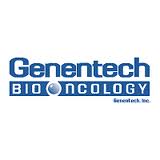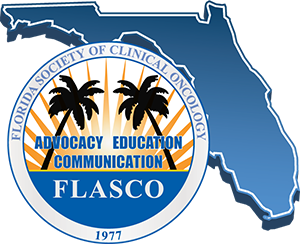Relapsed Or Refractory Follicular Lymphoma

- March 14, 2017
- Clinical Trials
For the treatment with follicular lymphoma who relapsed after, or are refractory to, a rituximab-containing regimen.
Choose Gazyva Plus Bendamustine Followed By Gazyva Monotherapy
GADOLIN Trial1,2
Trial design:
- GAZYVAa + bendamustineb followed by GAZYVA monotherapycwas evaluated vs bendamustine aloned in a Phase III, randomized, controlled trial in follicular lymphoma patients who had no response to or who progressed within 6 months of therapy with a rituximab-containing regimen
- Patients in the GAZYVA + bendamustine arm who did not have disease progression (patients with a complete response, partial response, or stable disease) at the end of the 6 cycles continued receiving GAZYVA monotherapy every 2 months for 2 years unless disease progression occurred during the treatment
a GAZYVA administered at 1000 mg (Cycle 1: Days 1, 8, 15; Cycles 2-6: Day 1)b Bendamustine administered at 90 mg/m2/day (Cycles 1-6: Days 1, 2)
c GAZYVA monotherapy administered at 1000 mg (q2 months x 2 years)
dBendamustine monotherapy administered at 120 mg/m2/day (Cycles 1-6: Days 1, 2)
Follicular lymphoma patients studied in the GADOLIN trial:
- Prior regimens: The patients studied in this trial were refractory to rituximab-containing regimens that primarily included R-CHOP, R-CVP, and rituximab monotherapy
- 79% were refractory to rituximab + chemotherapy, including
- R-CHOP and R-CVP
- 20% were refractory to rituximab monotherapy
- Prior number of therapies: Patients had a median of 2 prior therapies (range 1-10)
- 46% had 1 prior therapy
- 33% had 2 prior therapies
- ECOG PS:
- 95% of patients had an ECOG PS of 0-1
- 5% had an ECOG PS of 2
- Age: The median age of patients studied was 63 (range 34-87)
Only 2 patients enrolled into the trial had prior bendamustine exposure. R-CHOP, rituximab, cyclophosphamide, doxorubicin hydrochloride, vincristine sulfate, and prednisone; R-CVP, rituximab, cyclophosphamide, vincristine sulfate, and prednisone.
Indication
GAZYVA® (obinutuzumab), in combination with bendamustine followed by GAZYVA monotherapy, is indicated for the treatment of patients with follicular lymphoma (FL) who relapsed after, or are refractory to, a rituximab-containing regimen.
Important Safety information
Boxed WARNINGS: HEPATITIS B VIRUS REACTIVATION AND PROGRESSIVE MULTIFOCAL LEUKOENCEPHALOPATHY
- Hepatitis B Virus (HBV) reactivation, in some cases resulting in fulminant hepatitis, hepatic failure, and death, can occur in patients receiving CD20-directed cytolytic antibodies, including GAZYVA. Screen all patients for HBV infection before treatment initiation. Monitor HBV positive patients during and after treatment with GAZYVA. Discontinue GAZYVA and concomitant medications in the event of HBV reactivation
- Progressive Multifocal Leukoencephalopathy (PML) including fatal PML, can occur in patients receiving GAZYVA
Hepatitis B Virus Reaction
- Hepatitis B virus (HBV) reactivation, in some cases resulting in fulminant hepatitis, hepatic failure, and death, can occur in patients treated with anti-CD20 antibodies including GAZYVA. HBV reactivation has been reported in patients who are hepatitis B surface antigen (HBsAg) positive and in patients who are HBsAg negative but are hepatitis B core antibody (anti-HBc) positive. Reactivation has also occurred in patients who appear to have resolved hepatitis B infection (ie, HBsAg negative, anti-HBc positive, and hepatitis B surface antibody [anti-HBs] positive)
- HBV reactivation is defined as an abrupt increase in HBV replication manifesting as a rapid increase in serum HBV DNA level, or detection of HBsAg in a person who was previously HBsAg negative and anti-HBc positive. Reactivation of HBV replication is often followed by hepatitis, ie, increase in transaminase levels and, in severe cases, increase in bilirubin levels, liver failure, and death
- Screen all patients for HBV infection by measuring HBsAg and anti-HBc before initiating treatment with GAZYVA. For patients who show evidence of hepatitis B infection (HBsAg positive [regardless of antibody status] or HBsAg negative but anti-HBc positive), consult physicians with expertise in managing hepatitis B regarding monitoring and consideration for HBV antiviral therapy
- Monitor patients with evidence of current or prior HBV infection for clinical and laboratory signs of hepatitis or HBV reactivation during and for several months following treatment with GAZYVA
- In patients who develop reactivation of HBV while receiving GAZYVA, immediately discontinue GAZYVA and any concomitant chemotherapy and institute appropriate treatment. Resumption of GAZYVA in patients whose HBV reactivation resolves should be discussed with physicians with expertise in managing hepatitis B. Insufficient data exist regarding the safety of resuming GAZYVA in patients who develop HBV reactivation
Progressive Multifocal Leukoencephalopathy (PML)
- JC virus infection resulting in PML, which can be fatal, was observed in patients treated with GAZYVA. Consider the diagnosis of PML in any patient presenting with new onset or changes to preexisting neurologic manifestations. Evaluation of PML includes, but is not limited to, consultation with a neurologist, brain MRI, and lumbar puncture. Discontinue GAZYVA therapy and consider discontinuation or reduction of any concomitant chemotherapy or immunosuppressive therapy in patients who develop PML
Infusion Reactions
- GAZYVA can cause severe and life-threatening infusion reactions. Thirty-eight percent of patients experienced a reaction on Day 1 during treatment with GAZYVA in combination with bendamustine. Infusion reactions can also occur with subsequent infusions. Symptoms may include hypotension, tachycardia, dyspnea, and respiratory symptoms (eg, bronchospasm, larynx and throat irritation, wheezing, and laryngeal edema). Most frequently reported symptoms include nausea, fatigue, dizziness, vomiting, diarrhea, hypertension, flushing, headache, pyrexia, and chills
- Premedicate patients with acetaminophen, an antihistamine, and a glucocorticoid. Institute medical management for infusion reactions as needed. Closely monitor patients during the entire infusion. Infusion reactions within 24 hours of receiving GAZYVA have occurred
- For patients with any Grade 4 infusion reactions, including but not limited to anaphylaxis, acute life-threatening respiratory symptoms, or other life-threatening infusion reaction: Stop the GAZYVA infusion. Permanently discontinue GAZYVA therapy
- For patients with Grade 1, 2, or 3 infusion reactions: Interrupt GAZYVA for Grade 3 reactions until resolution of symptoms. Interrupt or reduce the rate of the infusion for Grade 1 or 2 reactions and manage symptoms
- For patients with preexisting cardiac or pulmonary conditions, monitor more frequently throughout the infusion and the post-infusion period since they may be at greater risk of experiencing more severe reactions. Hypotension may occur as part of the GAZYVA infusion reaction. Consider withholding antihypertensive treatments for 12 hours prior to and during each GAZYVA infusion, and for the first hour after administration until blood pressure is stable. For patients at increased risk of hypertensive crisis, consider the benefits versus the risks of withholding their antihypertensive medication
Tumor Lysis Syndrome (TLS)
- Tumor lysis syndrome, including fatal cases, has been reported in patients receiving GAZYVA. Patients with high tumor burden, high circulating lymphocyte count (>25 x 109/L) or renal impairment are at greater risk for TLS and should receive appropriate tumor lysis prophylaxis with antihyperuricemics (eg, allopurinol or rasburicase) and hydration prior to the infusion of GAZYVA. During the initial days of GAZYVA treatment, monitor the laboratory parameters of patients considered at risk for TLS. For treatment of TLS, correct electrolyte abnormalities, monitor renal function and fluid balance, and administer supportive care, including dialysis as indicated
Infections
- Serious bacterial, fungal, and new or reactivated viral infections can occur during and following GAZYVA therapy. Fatal infections have been reported with GAZYVA. Do not administer GAZYVA to patients with an active infection. Patients with a history of recurring or chronic infections may be at increased risk of infection
Neutropenia
- Severe and life-threatening neutropenia, including febrile neutropenia, has been reported during treatment with GAZYVA. Patients with Grade 3 to 4 neutropenia should be monitored frequently with regular laboratory tests until resolution. Anticipate, evaluate, and treat any symptoms or signs of developing infection. Consider administration of granulocyte colony-stimulating factors (G-CSF) in patients with Grade 3 or 4 neutropenia
- Neutropenia can also be of late onset (occurring more than 28 days after completion of treatment) and/or prolonged (lasting longer than 28 days)
- Consider dose delays in the case of Grade 3 or 4 neutropenia. Patients with severe and long lasting (>1 week) neutropenia are strongly recommended to receive antimicrobial prophylaxis until resolution of neutropenia to Grade 1 or 2. Antiviral and antifungal prophylaxis should be considered
Thrombocytopenia
- Severe and life threatening thrombocytopenia has been reported during treatment with GAZYVA in combination with bendamustine. Monitor all patients frequently for thrombocytopenia and hemorrhagic events, especially during the first cycle. In patients with Grade 3 or 4 thrombocytopenia, monitor platelet counts more frequently until resolution and consider subsequent dose delays of GAZYVA and bendamustine or dose reductions of bendamustine. Transfusion of blood products (ie, platelet transfusion) may be necessary. Consider withholding concomitant medications which may increase bleeding risk (eg, platelet inhibitors or anticoagulants), especially during the first cycle
Immunization
- The safety and efficacy of immunization with live or attenuated viral vaccines during or following GAZYVA therapy have not been studied. Immunization with live virus vaccines is not recommended during treatment and until B-cell recovery
Pregnancy
- There are no data with GAZYVA use in pregnant women to inform a drug-associated risk. GAZYVA is likely to cause fetal B-cell depletion. GAZYVA should be used during pregnancy and/or breastfeeding only if the potential benefit justifies the potential risk to the fetus and/or infant. Mothers who have been exposed to GAZYVA during pregnancy should discuss the safety and timing of live virus vaccinations for their infants with their child’s healthcare providers
Geriatric Use
- Of 194 patients with iNHL treated with GAZYVA plus bendamustine, 44% were 65 and over, while 14% were 75 and over. In patients 65 and over, 52% of patients experienced serious adverse events and 26% experienced adverse events leading to treatment withdrawal while in patients under 65, 28% and 12% experienced serious adverse events and adverse events leading to treatment withdrawal, respectively. No clinically meaningful differences in safety and efficacy were observed between these patients and younger patients
Additional Important Safety Information
- The safety of GAZYVA was evaluated based on a safety population of 392 patients with indolent NHL (iNHL), of whom 81% had follicular lymphoma. In patients with follicular lymphoma, the most common adverse reactions that were seen were consistent with the overall population who had iNHL
- Grade 3/4 adverse reactions were: neutropenia (33%), infusion reactions (11%), thrombocytopenia (10%), urinary tract infection (3%), upper respiratory tract infection (2%), pyrexia (1%), asthenia (1%), sinusitis (1%), and pain in extremity (1%)
- The most common adverse reactions (incidence ≥10%) were: infusion reactions (69%), neutropenia (35%), nausea (54%), fatigue (39%), cough (26%), diarrhea (27%), constipation (19%), pyrexia (18%), thrombocytopenia (15%), vomiting (22%), upper respiratory tract infection (13%), decreased appetite (18%), arthralgia (12%), sinusitis (12%), anemia (12%), asthenia (11%), and urinary tract infection (10%)
- During the monotherapy period with GAZYVA, the most common Grade 3-4 adverse reactions were neutropenia (10%), and anemia, febrile neutropenia, thrombocytopenia, sepsis, upper respiratory tract infection, and urinary tract infection (all at 1%)
- During the monotherapy period with GAZYVA, the most common adverse reactions were cough (15%), upper respiratory tract infections (12%), neutropenia (11%), sinusitis (10%), diarrhea (8%), infusion related reactions (8%), nausea (8%), fatigue (8%), bronchitis (7%), arthralgia (7%), pyrexia (6%), nasopharyngitis (6%), and urinary tract infections (6%)

